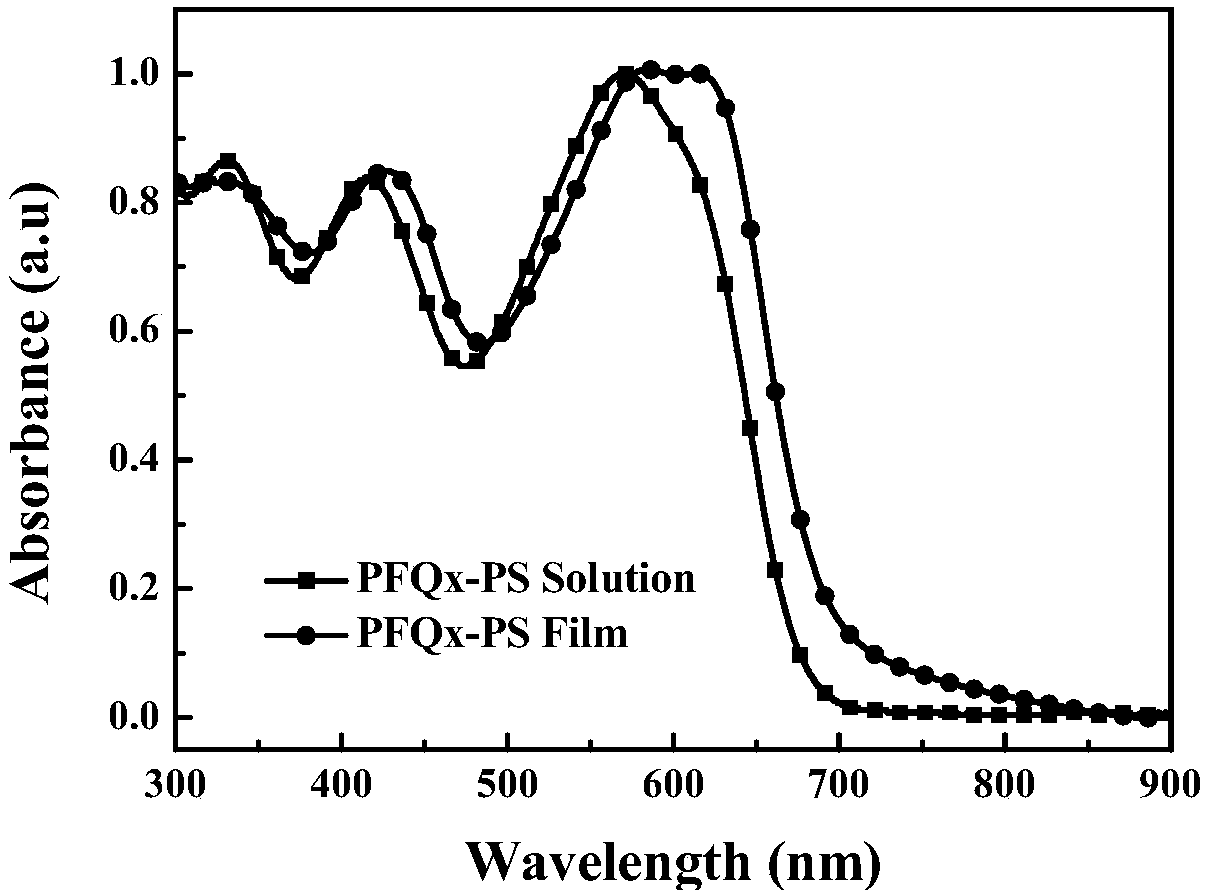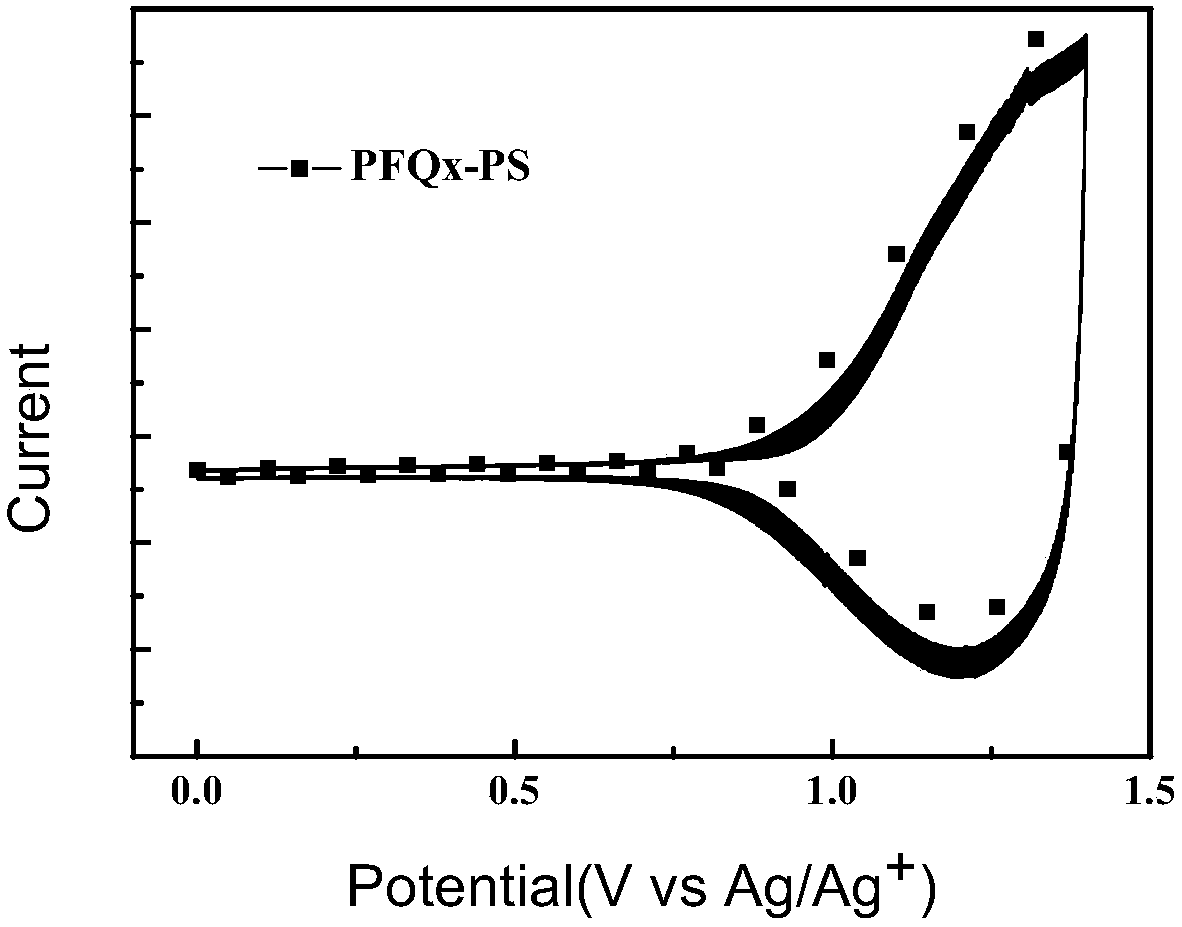Benzoquinoxaline tetrafluoride compound, benzoquinoxaline tetrafluoride based polymer as well as preparation method and application of enzoquinoxaline tetrafluoride based polymer
A benzoquinoxalinyl, benzoquinoxaline technology, applied in the field of polymeric solar cells, can solve the problems of low photocurrent, filling factor, low photoelectric conversion efficiency, etc., and achieves excellent dissolution processing performance and high photoelectric conversion efficiency. , Improve the effect of Jsc and FF
- Summary
- Abstract
- Description
- Claims
- Application Information
AI Technical Summary
Problems solved by technology
Method used
Image
Examples
Embodiment 1
[0059] a) Add 3-fluoro-4-bromophenol (15.0g, 75mmol), bromoisoctane (15.0g, 75mmol) and potassium carbonate (11.0g, 80mmol) in a 250mL single-necked round bottom flask, select N, N Dimethylformamide (80 mL) was used as a solvent, inflated and degassed three times, refluxed and stirred at 150° C. under the condition of argon as a protective gas, and reacted overnight. After the reaction is complete, stop the reaction, wait until the reaction solution is fully cooled to room temperature, extract with dichloromethane, wash the organic phase with water several times, remove unreacted raw materials or impurities dissolved in water, until the water layer is clear, spin dry with a rotary evaporator The organic phase was passed through a silica gel column with petroleum ether as an eluent, and the contact liquid was compared with the raw material by thin-layer chromatography to run the plate, the product point was collected, the solvent was spin-dried, and dried in a vacuum drying oven...
Embodiment 2
[0076] Photovoltaic properties of PFQx-PS:
[0077] The device structure is ITO / PEDOT:PSS / PFQx-PS:PC 71 BM / ZrAcac / Al;
[0078] The present invention uses the above-mentioned polymer as a working medium, and the method for preparing a polymer solar cell is: mix PFQx-PS with an appropriate amount of PC 61 BM or PC 71 Mix BM and its derivatives or other substances that can be used as electron acceptors, add an appropriate amount of solvent to dissolve, prepare a layer of translucent film on ITO conductive glass by conventional spin coating or other methods, and then vacuum evaporate Metal electrodes were evaporated on polymers to prepare polymer solar cell devices.
[0079] 5mg of PFQx-PS and 10mg of PC 71 Mix BM, add 0.5mL o-dichlorobenzene to dissolve, and prepare a film with a thickness of about 100nm on the conductive glass modified by PEDOT:PSS by spin coating as the active layer, and then use aluminum by vacuum evaporation. Metal electrodes are prepared on the active l...
Embodiment 3
[0104] With PFQx-T, PFQx-PO and PFQx-m-PO replace PFQx-PS as working medium, all the other conditions are the same as embodiment 1, also obtain good photovoltaic performance (PFQx-T is 8.6%, PFQx-PO is 7.4% and PFQx-m-PO of 7.0%).
[0105] Solubility properties:
[0106] The two polymers are well soluble in common solvents such as dichloromethane, chloroform, tetrahydrofuran and toluene.
[0107] In a word, the present invention synthesizes a series of tetrafluorobenzoquinoxaline (FQx) materials for the first time with good processability, and it is used in polymer solar cells, and it is proved to have better photoelectric conversion characteristics through preliminary attempts. This type of material has good thermal stability, superior light absorption characteristics, and good electrochemical performance. This type of fluorobenzoquinoxaline polymer material is universal and has great development prospects in organic solar cells. . The cell conversion efficiency PCE reache...
PUM
| Property | Measurement | Unit |
|---|---|---|
| surface roughness | aaaaa | aaaaa |
Abstract
Description
Claims
Application Information
 Login to View More
Login to View More - R&D
- Intellectual Property
- Life Sciences
- Materials
- Tech Scout
- Unparalleled Data Quality
- Higher Quality Content
- 60% Fewer Hallucinations
Browse by: Latest US Patents, China's latest patents, Technical Efficacy Thesaurus, Application Domain, Technology Topic, Popular Technical Reports.
© 2025 PatSnap. All rights reserved.Legal|Privacy policy|Modern Slavery Act Transparency Statement|Sitemap|About US| Contact US: help@patsnap.com



